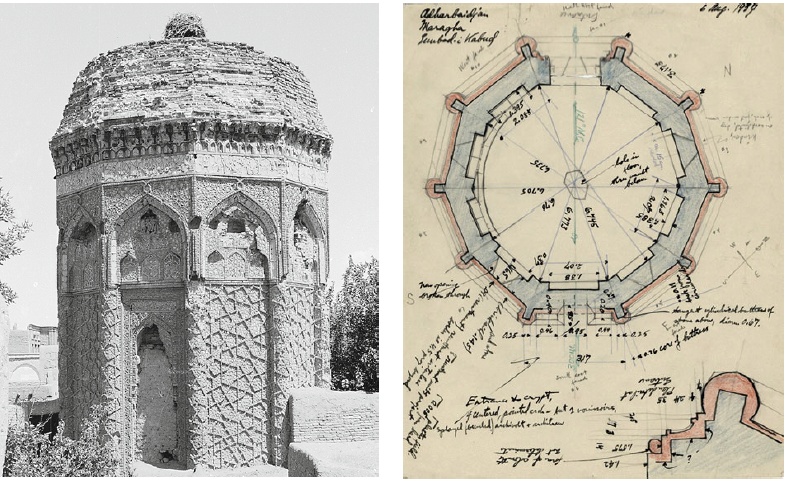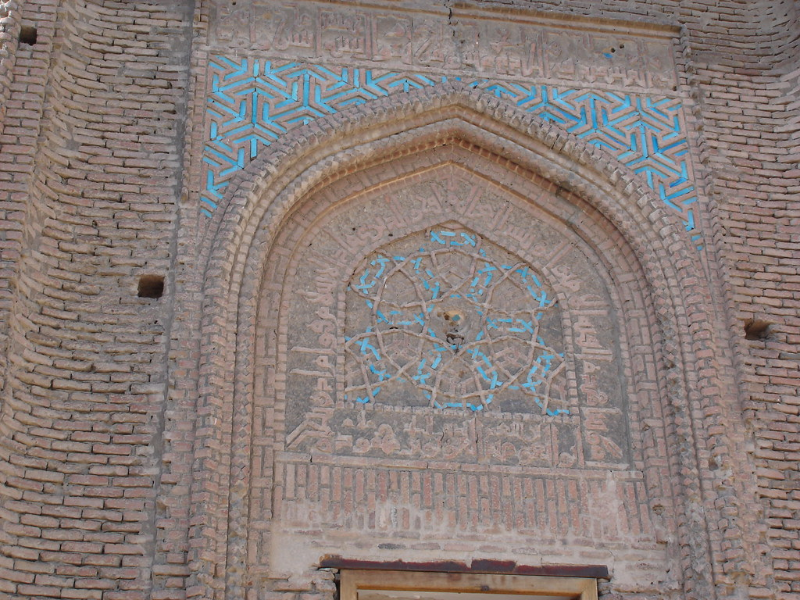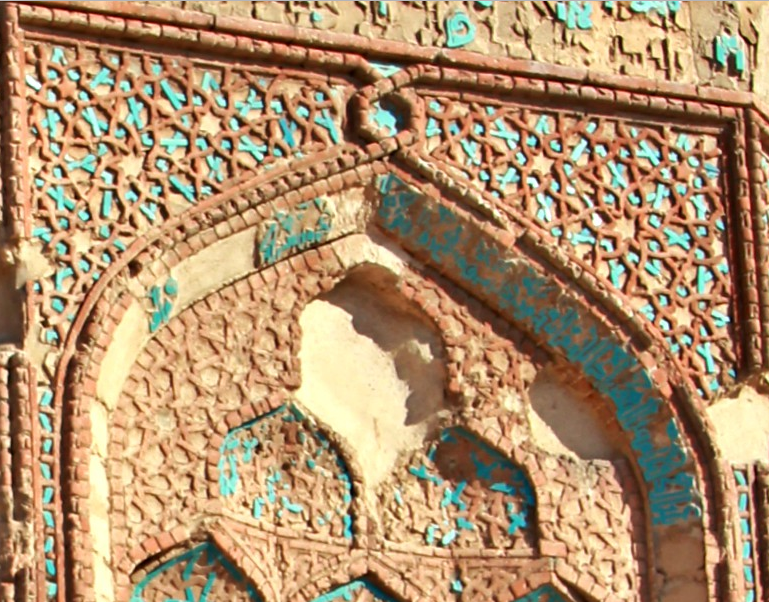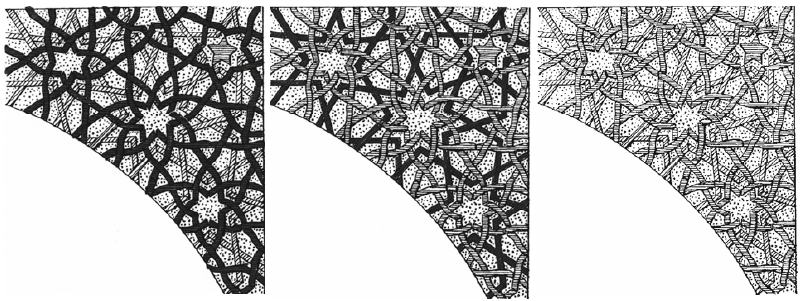Carol Bier
Who's counting?
In Taking Sides, but who's counting? Carol Bier pleads for a critical multi-disciplinary view in the examination of medieval Islamitic decorative pattern. She writes that Lu & Steinhardt Makovicky and Bonner pay a lot of attention for the tilings with 10-fold symmetry and the underlying polygonal pattern, but miss the fact that the building itself is decagonal and not octagonal, uncritically following the errors of earlier publications. She publishes a historical photograph and a drawing of the plan, both from 1937, clearly showing the shrine is decagonal, which she points out is crucial for the understanding of the building.

a global view
Carol Bier strongly pleads for an global view on the building. Modern researchers tend to project their mathematical story of quasi-crystalline structures on the medieval decorations and easily forget the historical-cultural background.
In The Decagonal Tomb Tower of Maragha and its Architectural Context she tries to situate the building within a broader historical background. Very interesting too is her article: Geometry Made Manifest: Reorienting the Historiography of Ornament on the Iranian Plateau and beyond. In this article she focusses on the link between the geometric pattern and the religious texts which are not accidently chosen. The
Kuran texts deal with the visible and invisible and about perfection. Our Western figurative view tells us the patterns aren’t representing anything, they’re just ‘ornamental’. According to her a Kuran fragment surah 59, verses 21-21 isn’t coincidently chosen: "...These are the examples (patterns) we present to the people; perhaps they will give thought. He is Allah; other than whom there is no deity, knower of the unseen and the witnessed.." . The geometric patterns to contain visible and unseen lines and lots of texts connect the study of geometry with learning and understanding deeper insights. Lots of material you can find in online published articles. At the end of this GeoGebrabook you can find a selection of links.

from Seljuks to Mongols
It’s accepted that the Gunbad-e Kabud dates from 1196-97 AC following a long line of Seljuk experiments shortly before the Mongol invasion in Iran, starting in 1219. Maragha was conquered in 1221. After further conquests Hulegu Khan, grandson of Dzjangis Khan, returned to Maragha making it the capital if the Ilkhanate. He built an astronomical observatory attracting the brightest scientists. After the conquest of Bagdad Hulegu even transferred the scientific library of Bagdad to Maragha. New instruments were developed and used and Maragha became a motor for scientific development. The remarkable building with its (unusual) decagonal plan and its decorative patterns marks as well the endpoint of the Seljuk experiments as the beginning of new developments under the new rulers, as a centre with a concentration of scientific knowledge and background.
Not just the wall panels
Carol Bier not just describes the wall panels, but also focusses on the tympans and spandrels above the wall panels. In the upper spandrel she distinguishes three superposed line patterns that mark 5-, 6- and 7-pointed stars.


In the lower spandrels, around muquarnas you can
notice (partly) overlapping polygons with inscribed stars: from top to the
bottom a 8-, 9- and 10-pointed star.
Click on the checkboxes to discover the stars
Lecture of Carol Bier in the Metropolitan Museum of Arts in New York
Online
More links you can find at https://works.bepress.com/carol_bier/